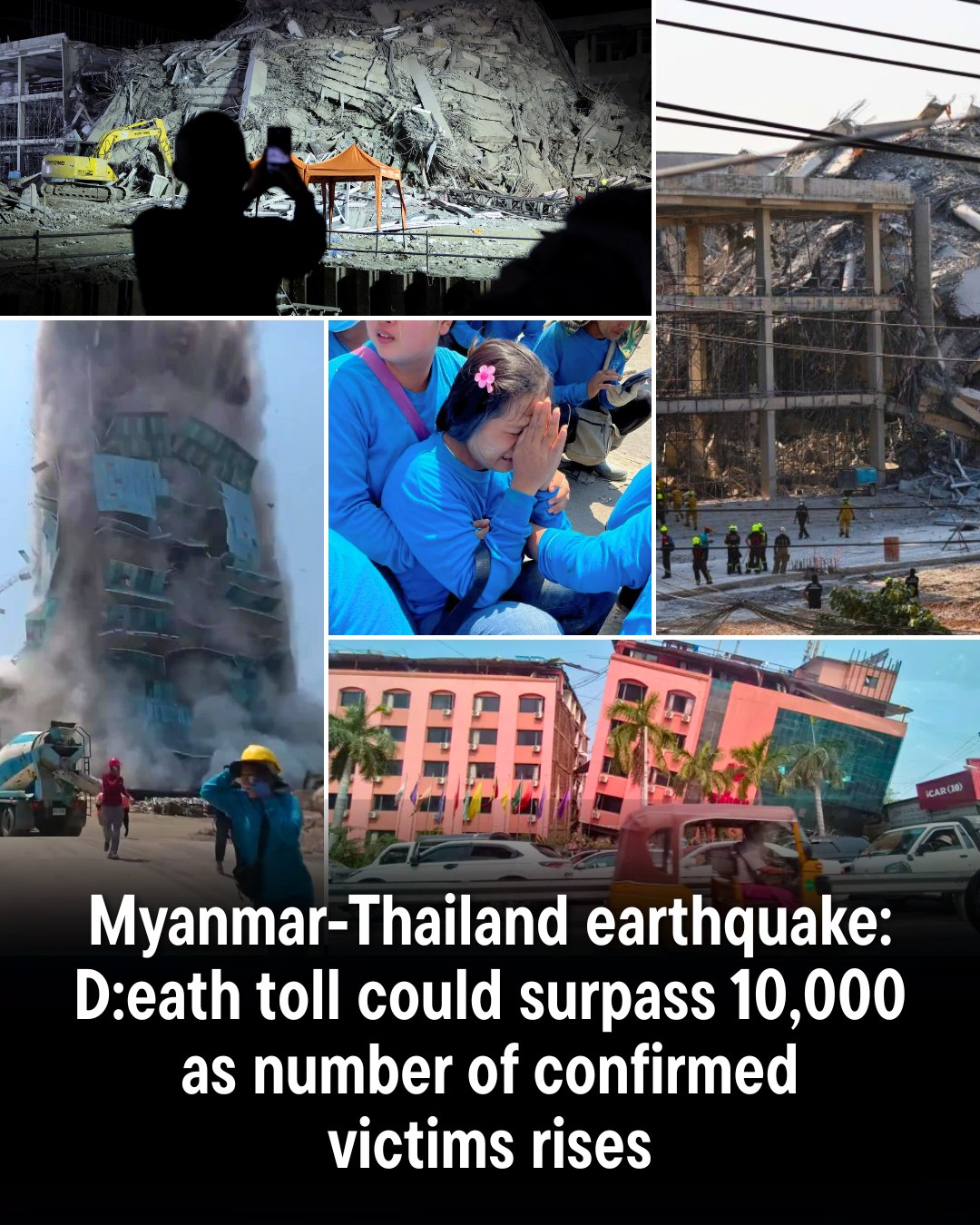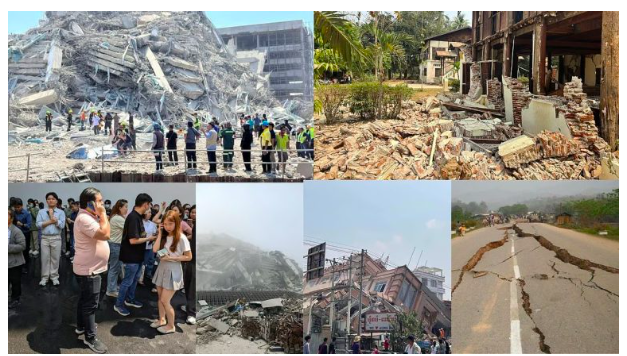
Powerful Earthquake Devastates Myanmar and Thailand, Raising Fears of Rising Death Toll.
A massive earthquake struck Myanmar and Thailand on Friday, March 28, 2025, leaving widespread devastation and raising concerns over an increasing number of casualties. The 7.7-magnitude tremor hit northwest Sagaing, Myanmar, causing catastrophic destruction across central Myanmar. The United States Geological Survey (USGS) quickly warned that the death toll could exceed 10,000 as the number of confirmed victims continued to climb.
Myanmar: A Nation in Crisis
Initial reports put the death toll at over 1,000 in Myanmar, with more than 2,000 injured, according to the country’s military leadership. However, with rescue efforts hampered by communication breakdowns, the real numbers are feared to be much higher. Thousands are still believed to be trapped under the rubble of collapsed buildings, prompting urgent search-and-rescue operations.
Mandalay, Myanmar’s second-largest city, suffered some of the worst destruction, with nearly 700 confirmed dead and over 1,670 injured. The military government has declared a state of emergency in six regions, including Mandalay, as authorities struggle to cope with the unfolding disaster.

Tremors Felt in Thailand
The earthquake’s impact extended to neighboring Thailand, where at least 10 people lost their lives. In Bangkok, a high-rise building under construction collapsed, leaving over 100 people trapped under the debris. While the city is more developed, many structures remain vulnerable to seismic activity due to inadequate building regulations. Rescue teams are working tirelessly to reach those still trapped, while international aid is beginning to arrive to assist with relief efforts.
A Wake-Up Call for Preparedness
This tragedy underscores the vulnerability of urban infrastructure, especially in countries experiencing rapid but often unregulated development. Myanmar has a history of seismic activity, with significant earthquakes recorded between 1930 and 1956. However, its cities remain particularly at risk due to aging buildings, poor construction standards, and a lack of proper urban planning.
For years, experts have warned that Myanmar’s rapid urbanization, combined with outdated building practices, would leave its population exposed to disaster. This earthquake has only reinforced the urgent need for stronger building codes, improved infrastructure, and better preparedness measures.

A Global Call for Action
As Myanmar and Thailand reel from the disaster, international attention is turning toward the urgent need for humanitarian aid. The USGS has emphasized the importance of global support, not only in immediate rescue efforts but also in long-term relief and rebuilding initiatives.
Governments, aid organizations, and individuals worldwide must come together to provide financial assistance, medical aid, and essential supplies.
However, the response must go beyond short-term relief—it must also focus on creating more resilient communities that can withstand future disasters. Addressing fundamental issues such as weak infrastructure, poor disaster preparedness, and outdated construction methods is crucial to preventing similar tragedies.

A Lesson for the World
Natural disasters remind us of our shared vulnerability. While earthquakes cannot be prevented, communities can be better prepared. This tragedy serves as a stark lesson in the importance of preparedness, compassion, and global solidarity.
As the world rallies around Myanmar and Thailand, this crisis should serve as a wake-up call. The responsibility to build safer, stronger communities is a collective one—because when disaster strikes, its impact is felt far beyond national borders. It is only through unity and resilience that we can rebuild from devastation and emerge stronger.

